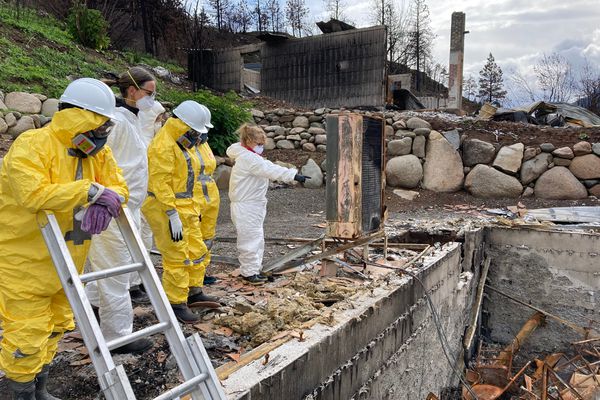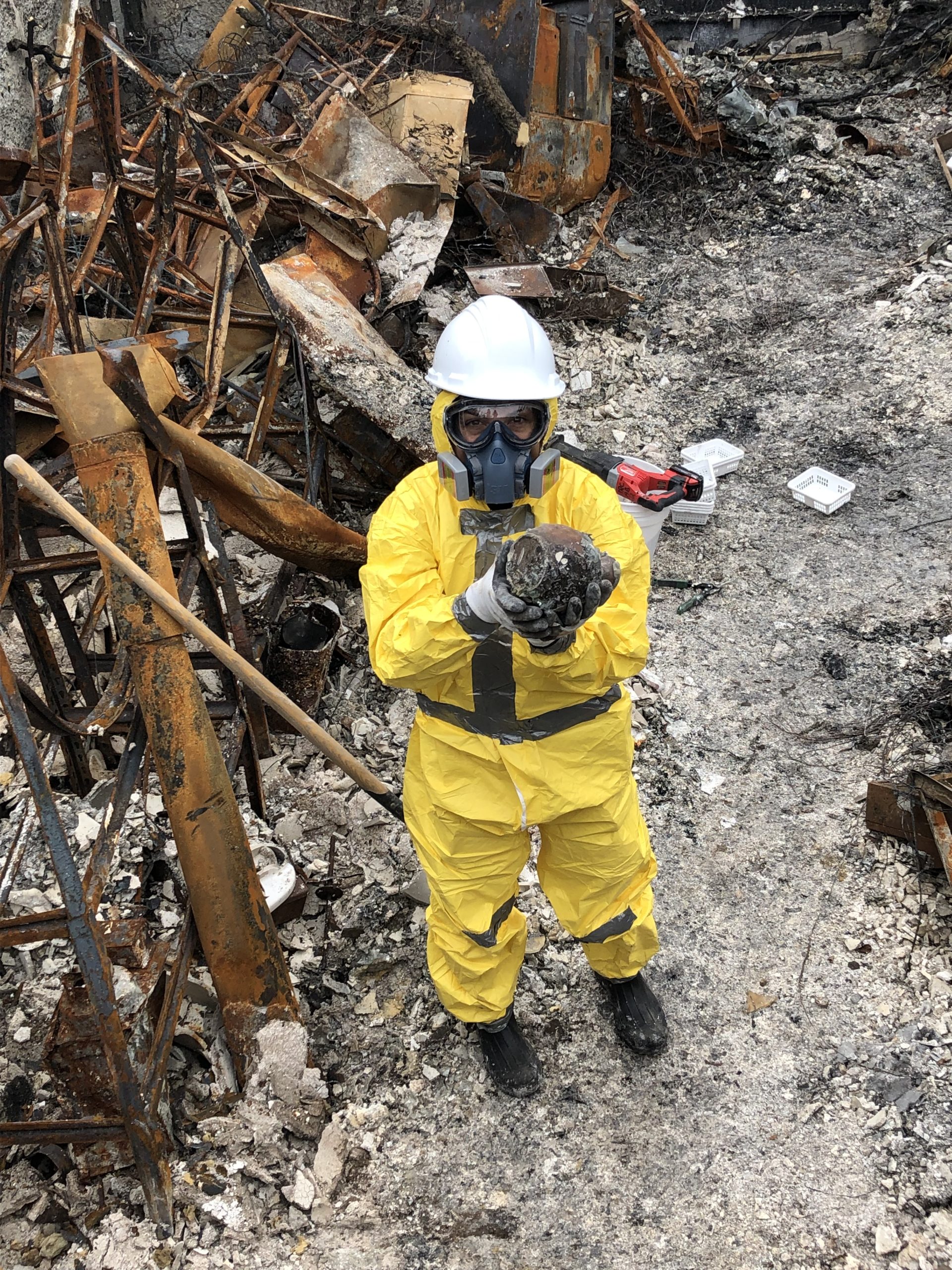BC Heritage Emergency Response Network Is Key to Cultural Sector Emergency Response in Reaction to Climate Change
BCMA team member Tanya Pacholok in conversation with BC HERN’s Tara Fraser and Heidi Swierenga
In this time of climate change, wildfires, floods, and destructive storms are becoming common events, adding to the known risk of earthquakes in British Columbia. All of these pose a serious threat to museums, art galleries, and other cultural institutions. The British Columbia Heritage Emergency Response Network — BC HERN — is a growing association of institutions in BC’s art and culture sector, who believe that our best line of defense is emergency preparedness, salvage training, and joining forces to support each other.
In October, the BCMA’s digital engagement specialist, Tanya Pacholok, interviewed BC HERN’s Tara Fraser of the Vancouver Art Gallery and Heidi Swierenga of the UBC Museum of Anthropology, to discuss the origins and objectives of BC HERN.
Reflecting on how BC HERN took shape, Heidi mentioned that back in 2013 the organization began with a slow start, but that “a few of us in the conservation community here on the coast experienced some pretty significant events within our institutions and… it became really worrisome and apparent that there was no organized response and recovery system in place to help keepers and holders and owners of heritage collections, be them libraries, museums, archives, galleries.”
Something needed to change and, with the help of a Museums Assistance Program grant through Canadian Heritage, the group’s goal was “getting the larger institutions that had conservation resources already in house signed onto a statement of cooperation, agreeing that emergency response was actually a critical thing for collections. And, within that, allowing conservators who worked within those institutions to participate in not just trying to build a network, but also developing and delivering resources that would increase the training within the province as a whole.”

BC HERN assesses the situation from above in Lytton. Photo: BC HERN, 2021
For Tara, emergency preparedness goes hand-in-hand with collections care. “It’s part of an overall strategy that we use to minimize the impact of an emergency or a disaster, if you will. We think of it and look at it as a continual process… we are constantly carrying out and implementing collections care and prioritizing our resources, so when we do emergency preparedness, this actually compliments our collections care by reducing our risks to our collection.”
Heidi agrees that emergency preparedness can help avoid additional damage by training our responses to be more automatic and less primal. “We see a complete void in the level of confidence that’s out there and the amount of support each of our institutions has, if it came to a big emergency, and it is such a no-brainer to connect with other people and get some practice under your belt so that you can actually make good decisions,” she offered.
Getting that practice, and having others obtain training, creates a strong network of emergency responders who can help in moments of crisis in the future. “The reason that we believe networks are so important is, without them, we simply couldn’t do this. It’s not just a matter of six conservators going and responding to every event throughout the province — that is not a sustainable model. So instead, the model here is train the trainers,” Heidi explained. “We have these pods of trained people around that can be pulled on to help respond in an event that happens within their geographical region.”
Heidi also reminded us that agreeing to volunteer for BC HERN doesn’t mean driving straight to every crisis. “The strengths of that network really depend on how many people go through the training and how many people sign on to volunteer to support these institutions, and being a volunteer might be… you’re agreeing to be on the end of the phone… you may be there as an emotional support.” Tara agrees that the sense of community and support created by the network is paramount to the emotional factors that come up in emergencies.

BC HERN actively searching for recoverable artifacts in Lytton. Photo: BC HERN, 2021

Treating recovered artifacts in the field in Lytton. Photo: BC HERN, 2021
Tanya asked Heidi and Tara to share how museums and cultural institutions can better respond to collection management emergencies. Tara insisted it is all about preparation. “It boils down to planning and you may have heard: ‘planning, prevention, protection, response’.” Tara added that this is the reason BC HERN is so important to them. “The training prepares us. The training improves our confidence. Training can help responders correctly use the tools and resources you should have on hand. And training also raises awareness of all involved.”
The BC HERN offers a variety of training and workshop opportunities, including salvage training workshops — a requirement for BC HERN membership. Their website also contains recorded webinars, in addition to new information sheets that are currently in the final phases of completion. “We’ll be creating a compendium that people can use to add to their disaster plans. Everything to do about salvage, talking not only about certain situations… but also, then going into each individual salvage technique based on materials,” Tara said. The information sheets will be aimed at individuals who have some conservation and collections experience as well as those who have no experience, since one important aspect of emergency management is directing and training volunteers in emergency procedures during a crisis.
Heidi and Tara both agreed that the experiences they have had in various moments of emergency have informed all aspects of the training and planning they put into BC HERN. The reflective aspect of assessing how things went has led to asking questions like “What would have been helpful?” and “What did we need?”, so that the next workshop or training can address those challenges, and the network can continue to learn and grow.
Heidi reminded Tanya that another resource BC HERN has been able to set up are BC HERN response kits. “We have one in the Prince George area, one in the Vancouver area, there’s one on Vancouver Island. We’re developing another two that will go further east and then another up north. And they’re stocked with… what really should be understood as an enhancement to your own existing institutional emergency response supplies. Because everybody needs their own kit, but sometimes you need a little bit more.”

Store, Protect, Preserve
For more than 25 years H i-Cube and Spacesaver have been trusted to design, supply, and install storage solutions that preserve and protect collections to more than 45 museums in BC and the Yukon.
Click to learn more
The BC Heritage Emergency Response Network and the BC Museums Association have partnered to create a new contingency fund that will allow skilled heritage emergency responders to mobilize and begin recovery and salvage efforts for museums, galleries, and cultural organizations across BC when emergencies strike. You can support the work of BC HERN by donating to the fund through the BCMA website — all funds go directly to BC HERN to help support the purchase of supplies for regional kits and mobilize the BC HERN network when disaster strikes.
You can listen to the full interview in the podcast episode “BCMA Climate Action Podcast Series EP03: A Conversation with the BC Heritage Emergency Response Network”, where Tara and Heidi talk about their experience with emergency response, as well as about salvaging in Lytton after the devastating wildfires in the follow up, “BCMA Climate Action Podcast Series EP04: BC HERN’s Salvage Trip to Lytton, BC”.

BC HERN volunteer with a recovered artifact pulled from the rubble. Photo: BC HERN, 2021

